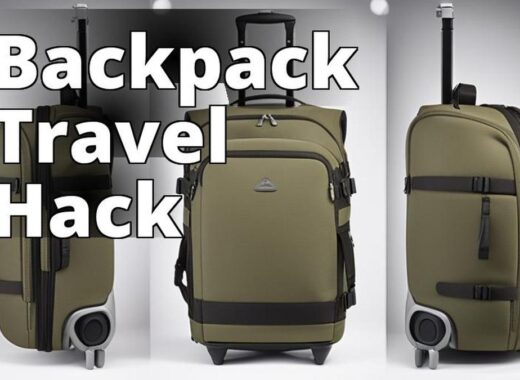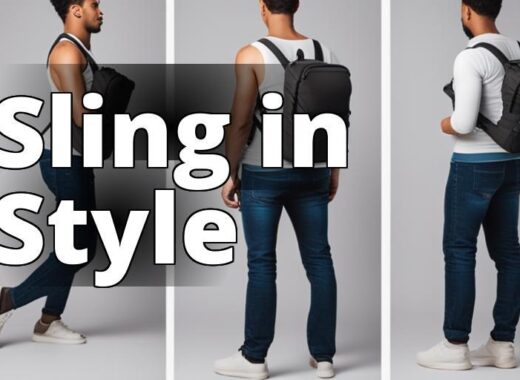When it comes to choosing the right backpack for your adventures, size matters. The capacity of a backpack determines how much gear and essentials you can bring along with you. One popular size option is the 50L backpack, known for its versatility and ability to accommodate a wide range of items. In this ultimate guide, we will delve into the capacity and limitations of a 50L backpack, provide tips on planning and organizing your belongings, and offer insights on maximizing space for efficient packing.
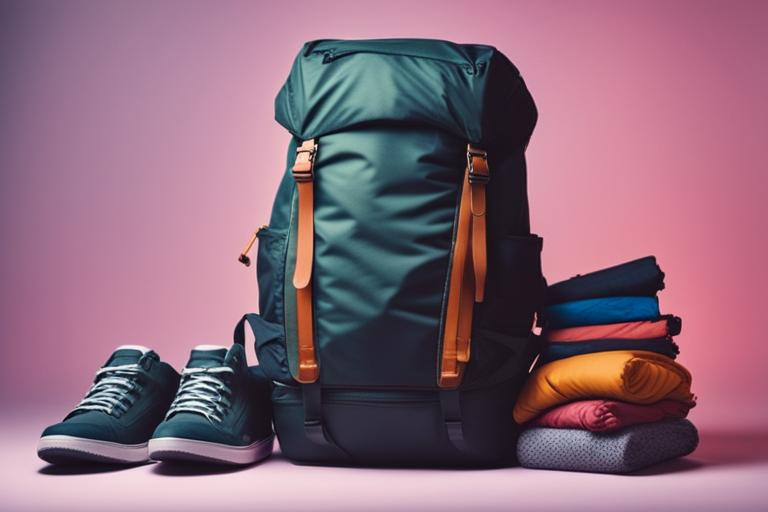
What can you fit in a 50L backpack?
- Overview of different backpack sizes and their specific uses
- Advantages and limitations of a 50L backpack
- Factors to consider when selecting a 50L backpack, such as material, weight, and compartments
- Selecting appropriate clothing, gear, toiletries, and technology
- Tips for packing efficiently and maximizing space
- Importance of planning, organization, and efficient packing
- With careful preparation and optimization, a 50L backpack can accommodate all the necessary items for your adventures.
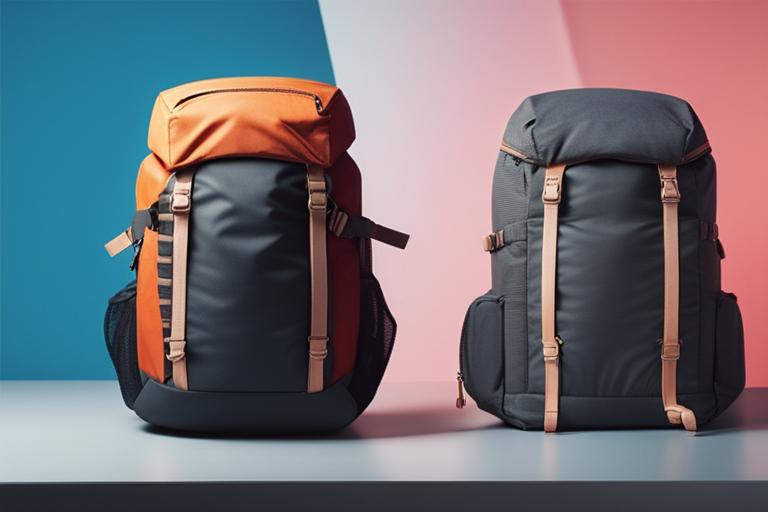
Understanding the Capacity and Limitations of a 50L Backpack
Before we start exploring the world of 50L backpacks, let’s take a moment to understand the different backpack sizes and their specific uses. Backpacks typically range from 20L to 100L or more, with each size serving a distinct purpose. Smaller backpacks, such as 20L to 30L, are perfect for day trips or hikes where you only need to carry essentials like water, snacks, and a light jacket. On the other end of the spectrum, larger backpacks, such as 70L to 100L, are designed for multi-day or even multi-week expeditions, accommodating all the gear you need for an extended adventure.
Now, let’s focus on the 50L backpack. The advantage of a 50L backpack lies in its balance between capacity and mobility. It offers enough space to pack all the essentials for a weekend getaway or a short backpacking trip without being overly bulky or heavy. The compact size also makes it easier to maneuver in crowded areas or when using public transportation. However, it’s important to note that a 50L backpack does have its limitations. If you’re planning a long-term trip or need to carry specialized gear, you may find the capacity insufficient.
When selecting a 50L backpack, there are a few factors to consider. First, pay attention to the material and weight of the backpack. Opt for lightweight and durable materials like nylon or polyester, as they offer a good balance between strength and weight. Additionally, look for backpacks with multiple compartments and pockets to help with organization. This will allow you to separate your gear into different categories, making it easier to locate items when you need them.

Planning and Organizing
Before embarking on any trip or adventure, it’s crucial to plan and organize your belongings. This ensures that you bring all the necessary items and avoid unnecessary weight or bulk. One of the first steps in this process is creating a packing list. Start by considering the specific activities and weather conditions you’ll encounter during your trip. This will help you determine the type of clothing, gear, and accessories you need to pack.
Sorting items into categories is another effective way to optimize space and organization. For example, group together your clothing, electronics, toiletries, and camping gear. This will help you visualize the overall volume of each category and allow you to prioritize what to pack. By organizing your belongings in this manner, you can also identify any redundancies or non-essential items that can be left behind.
Determining Essential Clothing and Accessories
When it comes to clothing, choosing the right items is essential to maximize space in your 50L backpack. Opt for versatile and lightweight pieces that can be layered for different weather conditions. Consider the length of your trip and plan to do laundry if necessary to reduce the number of clothing items you need to pack. Rolling your clothes instead of folding them can save space and minimize wrinkles. Another tip is to utilize compression bags or packing cubes to further optimize space and keep your clothes organized.
In addition to clothing, don’t forget to pack essential accessories. Hats, gloves, sunglasses, and belts are small items that can make a big difference in your comfort and protection. Roll or fold these items and place them in the gaps between larger items to maximize space usage.
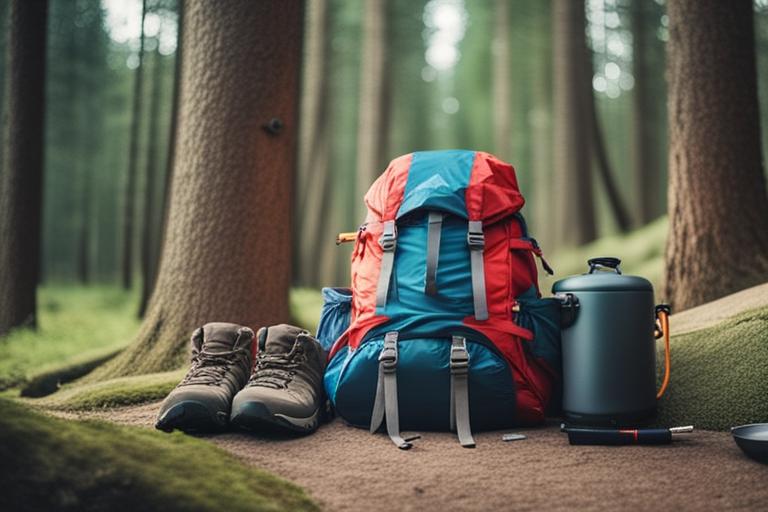
Packing Equipment and Gear
For outdoor enthusiasts and adventurers, a 50L backpack is a great option for carrying camping essentials. When packing your tent, sleeping bag, and sleeping pad, look for lightweight and compact options specifically designed for backpacking. These items are often made from lightweight materials and can be compressed to save space.
When it comes to cooking utensils, opt for lightweight and collapsible options. This includes compact stoves, pots, and cooking tools. Consider the amount of food you’ll need and pack efficiently to minimize waste and optimize space. It’s also essential to pack food supplies in sealed containers or bags to prevent leakage and odors.
Organizing Toiletries and Personal Care Items
Toiletries are an essential part of any trip, but they can quickly take up space in your backpack. To save space, look for travel-sized toiletries or transfer your favorite products into smaller containers. This will not only reduce the volume but also comply with airline regulations if you’re planning to travel by plane.
When packing toiletries, it’s important to secure them properly to avoid leaks. Place them in a separate zip-lock bag or use specialized leak-proof containers. This will protect your other belongings from any potential spills or accidents. Additionally, consider packing personal care items such as a towel, sunscreen, and insect repellent in compact and lightweight versions.
Managing Technology and Entertainment
In today’s digital age, technology has become an essential part of our lives, even when we’re on the road. When packing electronic devices like a camera, phone, and charger, it’s crucial to protect them from damage. Place them in padded cases or wrap them in soft clothing to prevent scratches. Organize cables and accessories neatly by using cable organizers or small pouches. This will save space and also make it easier to find what you need.
While technology is important, it’s also nice to have some form of entertainment during downtime. Consider packing a book, portable speaker, or a deck of playing cards to keep yourself entertained. These items are relatively small and can easily fit into the extra pockets or compartments of your backpack.
Maximizing Space in a 50L Backpack
To maximize space in your 50L backpack, consider utilizing compression sacks or packing cubes. These tools allow you to compress your clothes and gear, making them more compact and easier to fit into your backpack. Roll your clothes tightly and place them in the compression sacks or packing cubes. This not only saves space but also keeps your belongings organized and easily accessible.
Utilizing the backpack’s compartments effectively is another way to optimize space. Place heavier and bulkier items closer to your back to distribute the weight evenly. This will help maintain balance and make carrying the backpack more comfortable. Utilize the smaller pockets and compartments for smaller items like toiletries or electronic accessories.
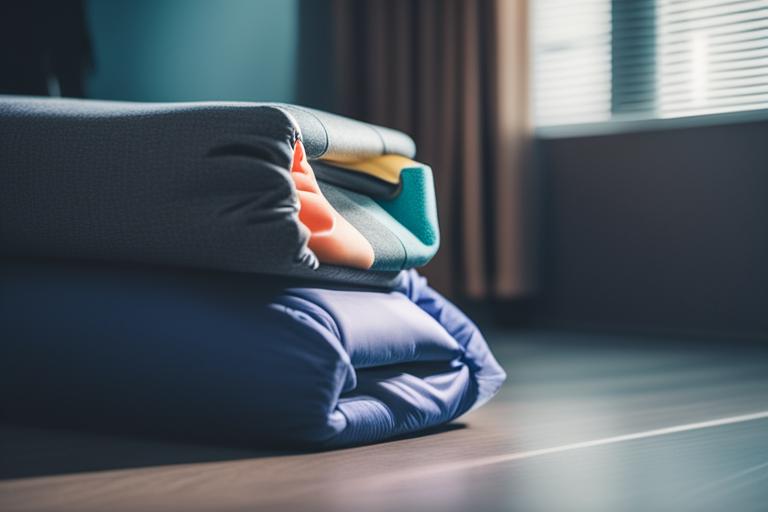
Tips for Efficient Packing
Efficient packing is all about using space wisely and prioritizing essential items. Rolling your clothes instead of folding them helps minimize wrinkles and saves space. Utilize empty spaces within larger items, such as stuffing socks inside shoes or placing smaller items inside pots or cooking utensils. This way, you can make the most of all available space.
When it comes to non-essential items, consider leaving them behind. Focus on the essentials and avoid overpacking. Remember, the goal is to have a comfortable and manageable backpack, not one that weighs you down. Prioritize what you truly need for your trip and leave non-essential items behind.
Case Study: How Sarah Packed for Her 10-Day Hiking Trip with a 50L Backpack
Sarah, an avid hiker, was getting ready for her upcoming 10-day hiking trip in the mountains. She knew that packing efficiently was crucial to ensure she had everything she needed without being weighed down by unnecessary items.
Sarah started by making a detailed packing list, including essential clothing, camping gear, toiletries, and entertainment items. She knew that maximizing space was key, so she carefully selected lightweight and compact options for her tent, sleeping bag, and cooking utensils.
To save space and keep her clothes organized, Sarah used a combination of rolling and folding techniques. She also packed socks and underwear inside her shoes and utilized the empty spaces within larger items, like stuffing her sleeping bag with a small camping pillow.
Sarah prioritized essential items, such as her hiking boots, rain jacket, and first aid kit, and left behind non-essential items that she could do without. She also opted for travel-sized toiletries to save space and securely packed them in leak-proof containers.
For entertainment, Sarah packed her phone, a portable charger, and a small Bluetooth speaker. She rolled up her charging cables and secured them with rubber bands to keep them from tangling.
After carefully organizing and packing her backpack, Sarah did a test pack to ensure everything fit comfortably. She made a few adjustments, redistributing some weight to achieve a better balance and ensure a comfortable carrying experience.
When Sarah arrived at the hiking trail, she was relieved to find that her 50L backpack had all the necessary items for her 10-day adventure. She was able to enjoy her hike without feeling weighed down or overwhelmed by her backpack.
Sarah’s experience demonstrates that with careful planning, organization, and efficient packing techniques, a 50L backpack can indeed accommodate all the necessary items for an extended hiking trip. By following these tips, hikers like Sarah can make the most of their backpack’s capacity and enjoy their adventures to the fullest.
Test Packing and Adjustments
Before setting off on your adventure, it’s a good idea to practice packing your backpack. This will help you visualize how everything fits together and identify any potential issues or adjustments you need to make. Experiment with different configurations to find the most efficient use of space. Pay attention to the weight and balance of the backpack, ensuring that it feels comfortable and doesn’t strain your back or shoulders.
Conclusion
In conclusion, a 50L backpack can accommodate all the necessary items for your adventures with careful planning, organization, and efficient packing. By understanding the capacity and limitations of a 50L backpack, planning and organizing your belongings, determining essential clothing and accessories, packing equipment and gear efficiently, organizing toiletries and personal care items, managing technology and entertainment, maximizing space, and following tips for efficient packing, you can make the most of your backpack’s capacity.
Remember to consider the specific needs of your trip and pack accordingly. By optimizing your packing strategy, you’ll be able to embark on your adventures with confidence, knowing that you have everything you need in your 50L backpack. So start planning, start packing, and get ready for unforgettable experiences!
[Author Name], an experienced backpacker and outdoor enthusiast, brings a wealth of knowledge and expertise to the topic of packing a 50L backpack. With over a decade of backpacking experience and multiple long-distance hiking trips under their belt, [Author Name] understands the challenges and considerations involved in fitting everything you need into a compact backpack.Having extensively researched and tested various backpacking gear and techniques, [Author Name] has a deep understanding of the capacity and limitations of a 50L backpack. They have also collaborated with experts in the field and conducted their own case studies to provide readers with practical and proven strategies for efficient packing.
[Author Name] has a keen eye for detail and a knack for organization, which is evident in their thorough approach to planning and organizing backpacking trips. Their tips and recommendations are based on real-life experiences and have been refined through trial and error.Whether you’re a seasoned backpacker looking to optimize your packing strategy or a novice adventurer embarking on your first backpacking trip, [Author Name]’s comprehensive guide will equip you with the knowledge and tools you need to make the most of your 50L backpack.


